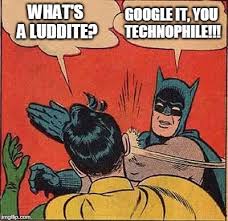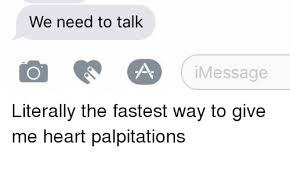
I’ve written about or mentioned a certain bugbear in many posts over the past few years. It’s something that, to quote great thinker and philosopher Peter Griffin, ‘really grinds my gears’.
I’m attending ALTC in Liverpool this week, and this morning, sitting at a 20 minute session looking at E-Assessment the thing that grinds those gears of mine was mentioned by somebody else. Finally, I have discovered that my frustrations are not isolated. Indeed, I echoed what had been said as a Tweet and this has become one of my most retweeted Tweets, retweeted, I suspect, by others who feel the same as me.
Here’s the thing. I work at a university where my role includes, among other things, the development of academics’ teaching skills via staff training sessions To an extent, I teach academics how to teach. There is an advisory element to my role, and I can often be found sitting with academics and suggesting teaching methods and tools that will help them to better embed learning technology and digital literacy into their programmes. I sit at curriculum planning meetings and highlight sessions and topics within a range of programmes that lend themselves to technology-based methods such as blended learning and the flipped classroom, and, of course, learning technology. I have even helped to shape the direction my institution takes regarding learning technology.
But, because I am aligned to the professional services sphere as opposed to that of the academic, I am officially, as I have learned today, an occupant of the ‘Third Space’. A space that is both academic and supportive yet specifically neither, where members of professional support resent me for ‘hanging out’ with academics, but academics take no notice of me as I don’t have their power, influence or ‘voice’. And that’s why I can know everything about, say, lecture capture, from how to schedule a lecture capture recording through to which rooms are equipped with lecture capture facilities and I can quote academic papers that discuss how and why to use lecture capture to improve student retention, satisfaction and teaching…but an academic will be given the role ‘academic lead for lecture capture’, and, inevitably, have absolutely no idea what how or why lecture capture is a thing. They will then send emails out to every other academic misinforming them of lecture capture, getting every aspect of it wrong, while I silently clear up their mess behind them…but what they say ‘goes’ just by dint of them being an academic. Based on this logic, if an academic says that we have to use a *’Speak and Spell’ as a voting pad or iPads as chopping boards, then that’s what will happen…because they are an academic and what they say is law.
Rant over. And rathe than being emotive because I’m in the thick of this situation, I want to look at this from a more objective and, dare I say it, academic stance. Let’s begin with the work of Celia Whitchurch, the academic who first coined the phrase ‘Third Space’.
In 2010, Whitchurch published a paper called Optimising the Potential of Third Space Professionals in Higher Education. Whitchurch’s work sought to develop her concept of a “Third Space” between professional and academic spheres of activity in higher education. These were represented in the paper by three processes described as Contestation, Reconciliation and Reconstruction. Whitchurch suggested that successful navigation of Third Space involved being able to work through the challenges and tensions bought about by the characteristic of Contestation, to build collaborative relationships via perceptions of added value; the characteristic of Reconciliation, and to construct new forms of plural space during Reconstruction.
There’s a PDF copy of the paper in full here.
The study saw the complex dimensions of Third Space as an emergent space in its own right, and as a concept to be applied to higher education institutional environments to illustrate “another mode of thinking about space that draws upon… traditional dualism, but extends well beyond [it] in scope, substance and meaning.” And that, I believe, is a solid starting point. At the moment I occupy a kind of ephemeral, limbo-like space where I am neither one thing or another, yet somehow both. Giving this space a name makes it real, and gives it substance.
By developing the concepts of Contestation, Reconciliation and Reconstruction, the study has progressed understandings of roles and relationships in Third Space, including the creation of new spaces and identities. There is a sense of resistance and struggle, via the Contestation process, as a legitimate part of identity construction and working practice. It therefore offers a way of acknowledging the more challenging aspects of Third Space, at the same time as those that are more developmental and creative, providing a tool for understanding increasingly complex relationships. But how long will this take? Whitchurch wrote her paper in 2010 It’ 2017 now, and I hadn’t heard of the term Third Space until this week. Why has this not become established – recognised – after all of this time?
Third Space, Whitchurch posits, demonstrates that a greater emphasis on relationships than on organisational structures can reduce checks and balances and leave some staff, particularly those who are less experienced, feeling vulnerable. Feedback suggested that there is also a sense in which Third Space could become all things to all people, or a default position for people who feel that they do not ‘fit’ the formal structures, possibly with a hint of the ‘subversive’. It could also foster a sense of a lack of identity if an individual was moving from project to project as a ‘project manager’, especially if they did not have a title that linked them into established institutional structures. And I see this. We may rally against it, but humans like to pigeon hole everything. You are an academic, ergo you do this, this and this. You are professional support, so you do that, that and that. It keeps things clean, manageable and clearly delineated. Blur the lines – create that Third Space – and the world may end. But in 2017, aren’t we all now so used to having to perform multiple roles outside of our official (and ever-growing) job title that such delineation becomes too rigid and, effectively, keeps us in a stranglehold?
The study suggests that optimising the potentials of those working in Third Space is likely to be a joint process, with (and here’s the kicker) responsibility on institutions to recognise and respond to changes that are occurring, and an onus on individuals to ‘educate’ their institutions about how Third Space might be used most advantageously.
Moreover, although Third Space working has implications for the relationship between institutions and their staff, this does not necessarily mean a major shift in approach. It may, rather, be a question of being creative within existing mechanisms, so as to give credit for new forms of activity. For instance, Third Space activity can be supported by more flexible employment packages for individuals who occupy a broader range of roles than hitherto, and develop careers that do not follow a traditional academic or professional pattern.
What seems clear, however, is that relationships rather than structures are at the heart of the way that Third Space works for individuals and institutions. Both, therefore, may wish to review the concept of Third Space, the processes associated with it, and ways in which they might make it work for them.
Yes please. By being confined within a binary system, I am unable to do the best I can for those whom we all serve in HE – the students. And surely that’s wrong?
*For anyone under 40, this is a Speak and Spell:

 I think I’ve mentioned before that blog posts are like buses: nothing for months, and then three come along all at once – and having noticed that I haven’t written any blog posts for a good six months I feel as if i should give an explanation. It’s not because I’m lazy, neither is it because I haven’t had the time. Quite simply, it’s because I haven’t done anything ‘blogworthy’ for a while.
I think I’ve mentioned before that blog posts are like buses: nothing for months, and then three come along all at once – and having noticed that I haven’t written any blog posts for a good six months I feel as if i should give an explanation. It’s not because I’m lazy, neither is it because I haven’t had the time. Quite simply, it’s because I haven’t done anything ‘blogworthy’ for a while.


 I’ve been working in the technology enhanced learning sector in one form or another for over a decade now, so I reckon I am able to give advice to the next generation of learning technologists without fear of reprisal. So here we go. Pin back your ears and take heed young Padawans, for here it comes:
I’ve been working in the technology enhanced learning sector in one form or another for over a decade now, so I reckon I am able to give advice to the next generation of learning technologists without fear of reprisal. So here we go. Pin back your ears and take heed young Padawans, for here it comes:
 I’m all for sharing. My parents made sure of that when I wouldn’t let me brother play with my Dick Dastardly pedal car and in return my brother wouldn’t let me play with his Evil Kneivel Stunt Bike, so he pulled the legs off my Sindy doll and I pushed him down the stairs.
I’m all for sharing. My parents made sure of that when I wouldn’t let me brother play with my Dick Dastardly pedal car and in return my brother wouldn’t let me play with his Evil Kneivel Stunt Bike, so he pulled the legs off my Sindy doll and I pushed him down the stairs.
 After almost 6 years working as a learning technologist, I’ve finally popped my ALTC cherry, and it’s been a blast. A hectic, non-stop, 10 hours a day, three day blast…but a blast nonetheless.
After almost 6 years working as a learning technologist, I’ve finally popped my ALTC cherry, and it’s been a blast. A hectic, non-stop, 10 hours a day, three day blast…but a blast nonetheless.

